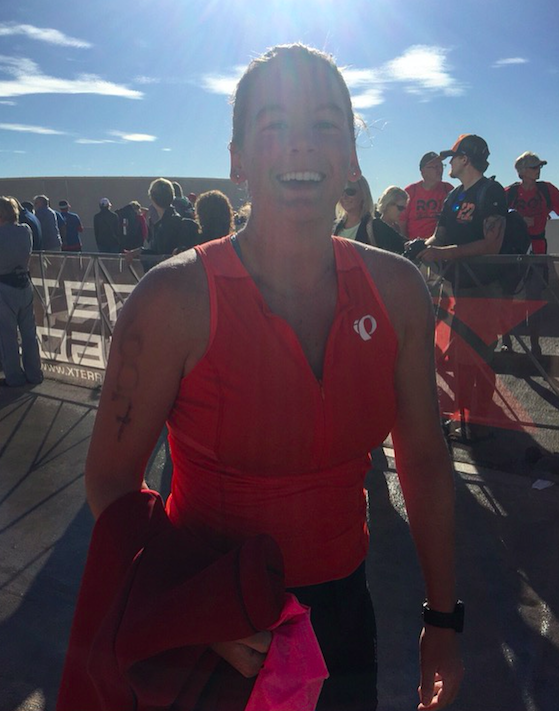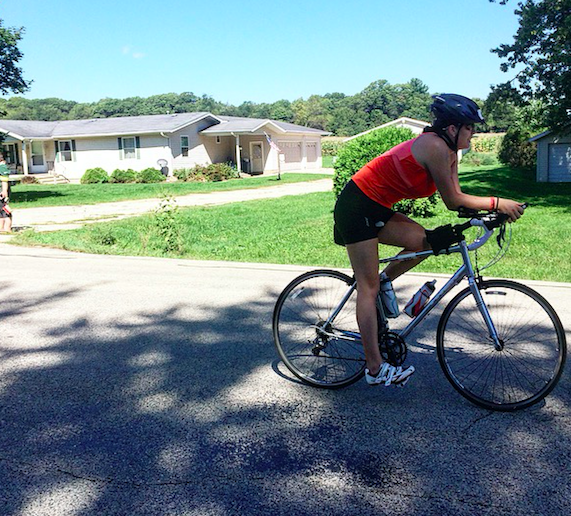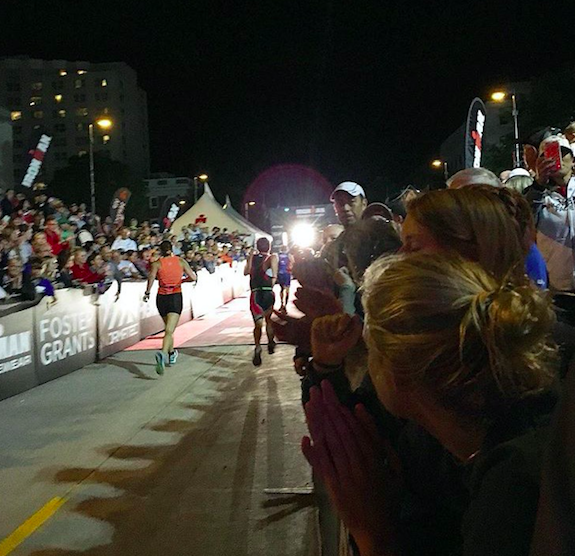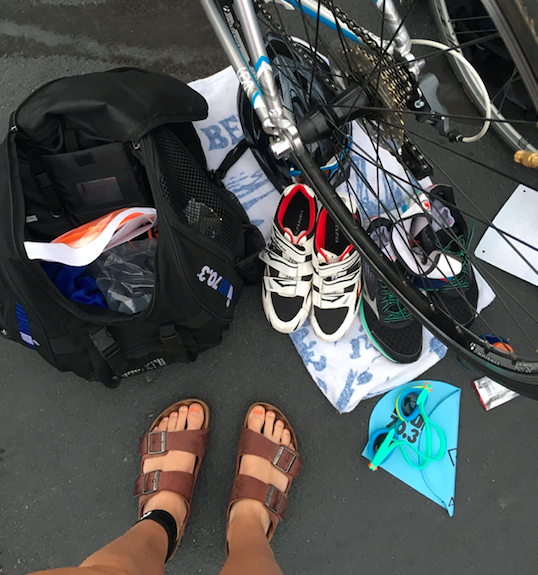Wearables aren't all dorky — these helped me compete in an Ironman race

Wearables have gotten a bad rap lately, and it's probably because of glorified pedometers like the Fitbit Blaze and Apple Watch that look dorky and don't do much beyond counting steps. And I'll admit, I'm one of the people that will readily throw shade at these products for failing to provide useful health information.
But the reality is, there are plenty of other wearables made specifically for athletes that are really helpful, ones that provide valuable information like running cadence, training load, recovery progress, exercise history analysis, and more specific fitness data. I know this because my own Garmin watch recently helped me shave an hour off my 140.6-mile Ironman triathlon race time.
SEE ALSO: This 'temporary tattoo' could totally change health care
I was introduced to useful, athlete-focused wearables during my freshman year at the University of Wisconsin. I joined the women's rowing team and knowing my heart rate became one of the most important things in my life that year.
Then, I got vocal cord dysfunction on a training trip and called it quits. But five months later, my sister Chelsea serendipitously raced in Ironman Wisconsin, and it was shortly after that I became inspired and bought my own Trek Lexa C bike.

Image: molly sequin/mashable
And although my rowing watch was only around $50 and didn't do much, it opened me up to the world of wearables. So, in the spirt of taking on the seemingly insurmountable task of competing in an Ironman triathlon, I decided to pick up a CatEye Multifunction Sports Watch to step my game up— so that I'd be ready when it was finally time to race in the Ironman 70.3.
I trained eight months for the Ironman 70.3 Racine, so I learned everything I could about my new watch. It had an accurate heart rate monitor and five programmable zones (or targets) to help me keep my active heart rate stable and my resting heart rate as low as possible. Other features were time and distance intervals and training file storage that helped me keep track of my training plan.
I was waking up at 5 a.m. to go for 15 mile runs and 60 mile bike rides through a crummy Wisconsin spring. I could accurately guess my heart rate at any given moment within two beats. I felt like I had a total command over my mental and physical fitness, and I knew that people training without a watch like mine didn't have that same feeling.
The day before the race I decided to replace my battery just to be safe. I went for a quick warmup swim the next morning and my watch filled with sand and water after the man who replaced my battery didn't put the back on tight. That was a huge mental roadblock.
I got through the 1.2 mile swim and hopped on my bike to find out my bike computer was out of commission, too. My sister tossed me a regular old Timex watch so I would at least have some general sense of time.

Image: molly sequin/mashable
I finished the race around an hour later than I had hoped for. And I have no doubt that part of that was due to not having the watch I trained with. Although I was a bit upset, I was still happy to have finished my first major race.
But this was the moment I truly became aware of how useful wearables really are in the world of athletics. They feed you so much information about your body, tempo, and the race environment around you. And when you no longer have access to that, it truly feels like you've lost a month of preparation.
So, I learned my lesson and made my next watch one that didn't rely on a replaceable lithium battery. I got my hands on a Garmin Forerunner 235, and that's what I still train and race with to this day. The Garmin's great because it's so light (and in Wisconsin Badgers colors, of course).
The Garmin is basically a Swiss Army Knife of useful biometric trackers. It features live tracking of my routes, gives me notifications about my workout, and tracks my heart rate on my wrist. I can set timers, lap my sets, and dive in the pool with the waterproof watch. It also uses GPS and satellites to track where I'm at, both indoor and outdoor. And there's way more, too.
I trained with my Garmin for 10 months before competing in Ironman Wisconsin on September 11, 2016. I was nervous to tackle the 140.6 mile course, especially after all of my technological malfunctions back in Racine. On top of that, I had Quadriceps Tendonitis. But I knew that I could count on my Garmin for the day, and the reassurance of having this gadget with me made me somehow feel so much better.
I stood nervously on the shore of Lake Monona and hoped everything would work out. Over 2,000 people competed in the race, and we used a mass swim start. So I swam out about 100 feet treaded water around people with a similar pace. I set a timer on my watch to alert me five minutes, two minutes, and thirty seconds before the airhorn.

Image: molly sequin/mashable
My heart beat was out of this world. When the horn blew, I started making my way along the 2.4 mile course. The mass start freaked me out and for a second I didn't know if I could continue. Then I remembered all of the hard work I put in and went back to work. I checked my Garmin about every 10 minutes during the swim, and it let me know that I was right on track. I gained some confidence and was peeling off my wetsuit an hour and a half after I jumped in the lake.

Image: molly sequin/mashable
I made my way to transition and hopped on my bike. I have a CatEye bike computer mounted on my aerobars, I just needed my Garmin to give me info about heart rate and general time. And I knew I could count on it as a backup for distance and speed stats if my computer broke.
Eight hours and 112 miles of rolling hills later, I was in transition for the final portion of the race. And my watch was still working beautifully and had enough battery power left to get me through the day.
My knee was hurting pretty badly, and I was experiencing gut rot from all the Aspirin, gel, and Gatorade I was consuming all day. But there's really no better experience than the running portion of an Ironman. I continuously checked my heart rate, speed, and distance to make sure I was on track for the final 26.2 miles of the race.

Image: molly sequin/mashable
I crossed the finish line in between Lake Monona and the state capitol building at around 10 p.m. and was overwhelmed with joy and pride. All of my equipment kept up with me the entire day, and I reached my biggest goal yet.
And my family, friends, and thousand of strangers were there to support me the whole time. Ironman inserts a chip into an ankle bracelet that every athlete wears for tracking purposes.
So, while you're tracking the race your way, your supporters can use your number to see exactly where you are during the race the how quickly you're making your way to the next marker.

Image: Molly Sequin/mashable
My own wearable in addition to Ironman's added up to a day of confidence and a sense of safety for everyone involved. It was great, and the race would have been very different without them.
So it's time to give wearables the respect they deserve. Yes, there are a lot of average sleep trackers and step-counters out there. But there's also a whole world of wearables and fitness trackers that play a huge role in athletes' success. And it's time to give them some overdue credit.
WATCH: This vibrating fitness roller will stretch and soothe your achy back


 Yahoo News
Yahoo News 
